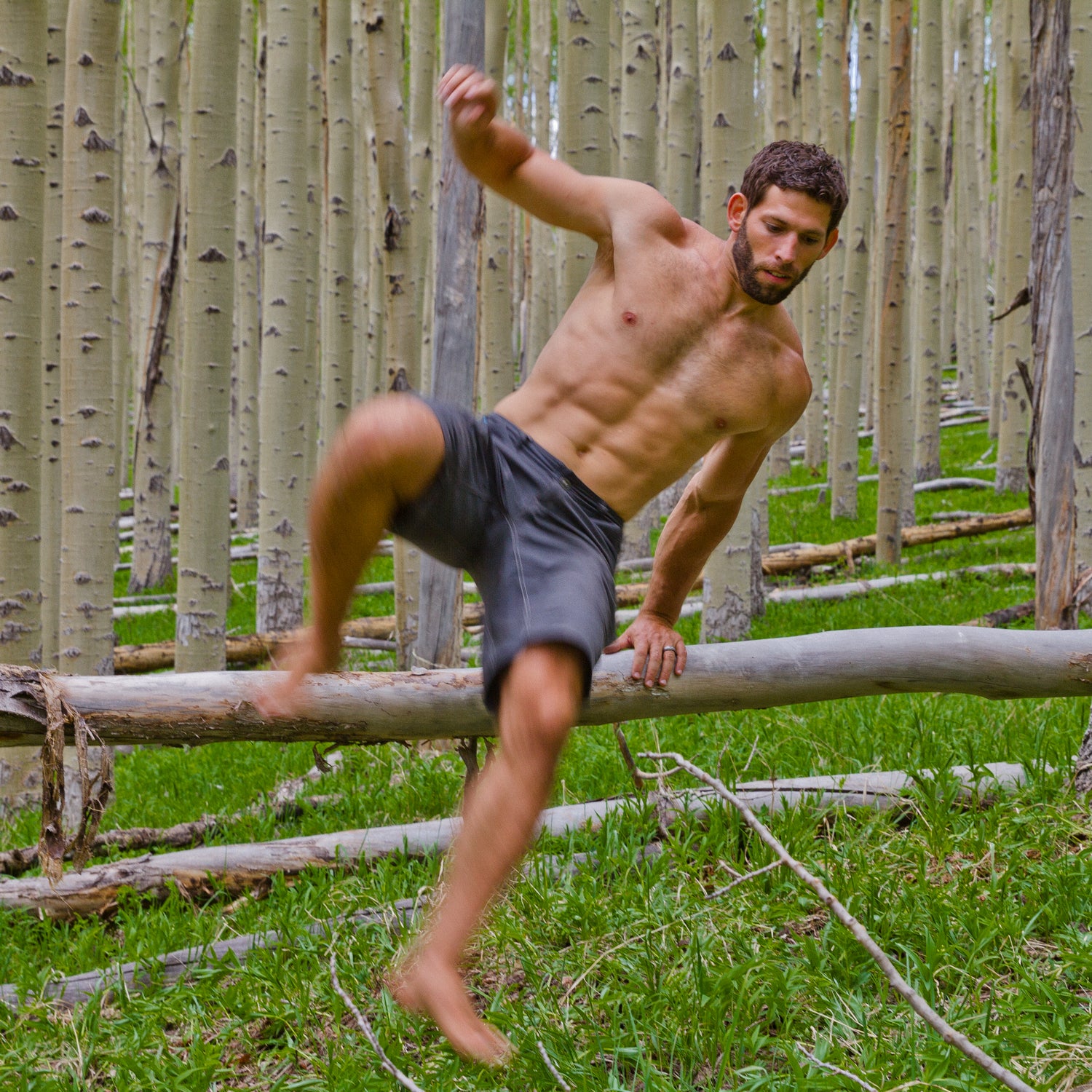Imagine this: You’re a quarter-mile from the top of your trail run, cruising on singletrack at a solid pace but ready for the break your downhill return offers. All of a sudden, you come across a downed tree that’s too big to step over or walk around. It halts you midstep and crushes your momentum. But what if you could nimbly jump right over it without breaking stride?
That’s what —a company started in 2008 by French fitness guru Erwan Le Corre focused on using the environment to restore natural human movements—wants you to do. MovNat calls it vaulting: “It allows you to overcome an obstacle while maintaining momentum and minimizing energy expenditure,” says Danny Clark, a certified MovNat trainer. “It’s significantly more efficient to simply change your body position and continue over the object than stop to figure out how to do so.” Not only will you save energy in that moment, you’ll learn how to respond to any environmental challenges effectively so you can perform at your highest level no matter what you run into on the trail.
At MovNat, you start with the most basic vault: —a stable and simple way to overcome obstacles that involves planting both hands on the obstacle and using one foot to help you bound over it. “It uses the same pattern applied for simpler moves, such as getting off the ground,” Clark says. Starting with basic ground movements gets you acquainted with the skills it will take to nail the tripod vault. Once you’ve mastered that foundation, you’ll progress to vaults that require more dexterity or strength, such as the .
You’ll notice the impact of vaulting almost immediately when you’re out in nature—hiking and running on trails, skiing out of bounds, or going off-road to that perfect camping spot. “It opens up a whole new side of backcountry and trail exploration,” Clark says. “We learn that overcoming these obstacles doesn’t have to be hard. With a good dose of mindfulness, strategy, and technique, it takes only a fraction of the effort, so you have the energy to keep trekking and have more fun.”
But it benefits you in ways beyond just getting over downed trees and inconvenient boulders. Mastering the vault, even in its most basic form, helps to restore your body’s innate range of motion—much of which has been lost due to daily activities like sitting and driving—which directly translates to enhanced performance as an athlete. As you increase joint mobility and muscle control, your body starts to use energy more efficiently, gains speed and agility, builds strength in major muscle groups and smaller stabilizer muscles, and creates a solid base to go faster for longer on your runs or rides.


